All of the coloring pages displayed on this page are free for personal use (view full use policy). Any brands, characters, or trademarks featured in our coloring pages are owned by their respective holders and depicted here as fan art.
Please enjoy these m is for mouse coloring pages!
Whimsical Mouse with Cheese Coloring Pages
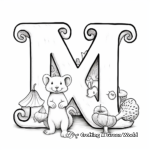
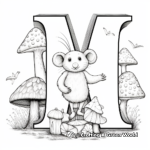
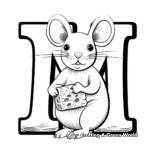

Mouse Family Coloring Pages: Mother, Father, and Babies
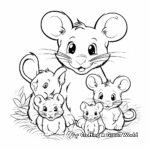

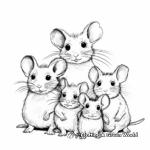
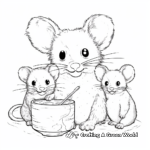
Detailed Grey Mouse Coloring Pages for Adults
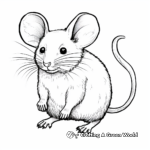

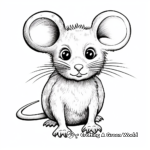

Friendly Cartoon Mouse Coloring Pages for Children
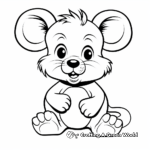

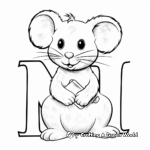

Field Mouse and Forest Scene Coloring Pages
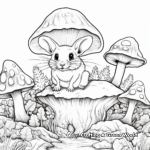
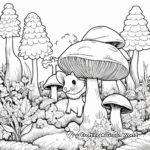
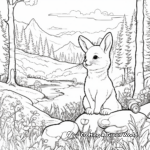
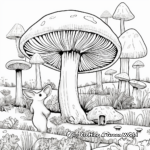
Artistic Abstract Mouse Coloring Pages




Sleeping Mouse Coloring Pages for Toddlers
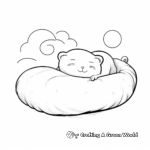
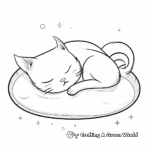
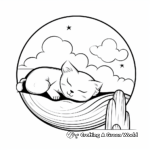
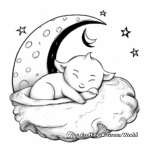
Cute Mouse and Cupcake Coloring Pages

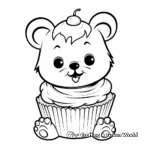
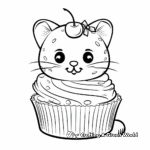
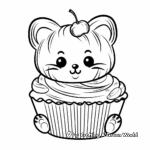
Mouse and Sunflower Printable Coloring Sheets


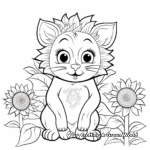

Mouse in a Teacup Coloring Pages


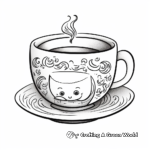
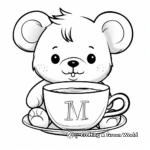
Mama Mouse and Baby Mouse Coloring Pages
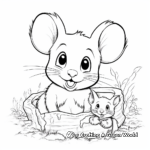

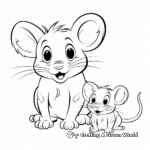
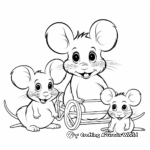
City Mouse vs Country Mouse Coloring Pages
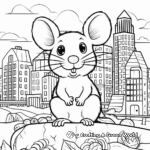
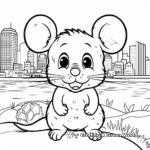


Dapper Mouse in Clothes Coloring Pages
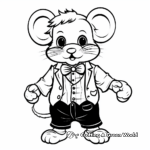
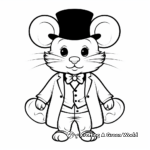
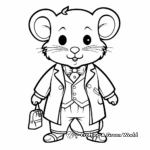

Lovestruck Mouse with a Heart Coloring Pages
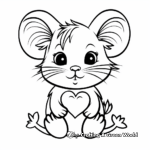
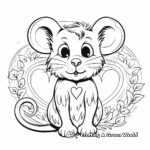
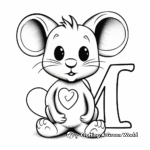
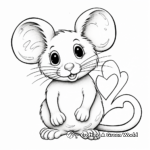
Mice and Moonlight Night-time Coloring Pages

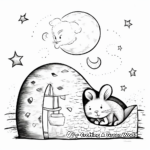

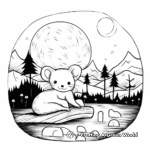
Can you provide some interesting facts about mice that I could incorporate into my art?
Mice are known for their adaptability and can live in a variety of environments, from fields to forests to manmade structures. They eat fruits, grains, and seeds, but can also eat insects and meat if necessary. Mice have a keen sense of hearing, smell, taste, and touch, and are also excellent climbers, swimmers, and jumpers. Including some of these elements could make your M is for Mouse coloring page more unique and educational!
Are there any unique features of the mouse I should pay attention to while coloring?
Yes, mice have large, round ears and long, thin tails. Their noses are also quite pointed. While coloring, try to bring out these characteristics to make your mouse look more realistic.
Can you provide some interesting facts about mice that I could incorporate into my art?
Mice are known for their adaptability and can live in a variety of environments, from fields to forests to manmade structures. They eat fruits, grains, and seeds, but can also eat insects and meat if necessary. Mice have a keen sense of hearing, smell, taste, and touch, and are also excellent climbers, swimmers, and jumpers. Including some of these elements could make your M is for Mouse coloring page more unique and educational!
How can I add more detail and realism to my M is for Mouse coloring?
To add more dimension and realism to your mouse, start with a base color, then add darker shades where appropriate for shading, such as under the mouse or around the sides of the mouse’s body. Lighter strokes can be added in the centers or on top to highlight. You can also add textures, such as fur lines, with quick, short strokes.
Are there any unique features of the mouse I should pay attention to while coloring?
Yes, mice have large, round ears and long, thin tails. Their noses are also quite pointed. While coloring, try to bring out these characteristics to make your mouse look more realistic.
Can you provide some interesting facts about mice that I could incorporate into my art?
Mice are known for their adaptability and can live in a variety of environments, from fields to forests to manmade structures. They eat fruits, grains, and seeds, but can also eat insects and meat if necessary. Mice have a keen sense of hearing, smell, taste, and touch, and are also excellent climbers, swimmers, and jumpers. Including some of these elements could make your M is for Mouse coloring page more unique and educational!
Tips For Coloring M Is For Mouse
What colors should I use for an M is for Mouse coloring page?
You will most likely need various shades of grey for the mouse’s body, pink for the ears, and a darker color like black or brown for the eyes. The tail is typically a lighter shade of grey or pink. However, remember that this is your coloring page, and you can use any colors you feel like!
How can I add more detail and realism to my M is for Mouse coloring?
To add more dimension and realism to your mouse, start with a base color, then add darker shades where appropriate for shading, such as under the mouse or around the sides of the mouse’s body. Lighter strokes can be added in the centers or on top to highlight. You can also add textures, such as fur lines, with quick, short strokes.
Are there any unique features of the mouse I should pay attention to while coloring?
Yes, mice have large, round ears and long, thin tails. Their noses are also quite pointed. While coloring, try to bring out these characteristics to make your mouse look more realistic.
Can you provide some interesting facts about mice that I could incorporate into my art?
Mice are known for their adaptability and can live in a variety of environments, from fields to forests to manmade structures. They eat fruits, grains, and seeds, but can also eat insects and meat if necessary. Mice have a keen sense of hearing, smell, taste, and touch, and are also excellent climbers, swimmers, and jumpers. Including some of these elements could make your M is for Mouse coloring page more unique and educational!
Tips For Coloring M Is For Mouse
What colors should I use for an M is for Mouse coloring page?
You will most likely need various shades of grey for the mouse’s body, pink for the ears, and a darker color like black or brown for the eyes. The tail is typically a lighter shade of grey or pink. However, remember that this is your coloring page, and you can use any colors you feel like!
How can I add more detail and realism to my M is for Mouse coloring?
To add more dimension and realism to your mouse, start with a base color, then add darker shades where appropriate for shading, such as under the mouse or around the sides of the mouse’s body. Lighter strokes can be added in the centers or on top to highlight. You can also add textures, such as fur lines, with quick, short strokes.
Are there any unique features of the mouse I should pay attention to while coloring?
Yes, mice have large, round ears and long, thin tails. Their noses are also quite pointed. While coloring, try to bring out these characteristics to make your mouse look more realistic.
Can you provide some interesting facts about mice that I could incorporate into my art?
Mice are known for their adaptability and can live in a variety of environments, from fields to forests to manmade structures. They eat fruits, grains, and seeds, but can also eat insects and meat if necessary. Mice have a keen sense of hearing, smell, taste, and touch, and are also excellent climbers, swimmers, and jumpers. Including some of these elements could make your M is for Mouse coloring page more unique and educational!
Related Coloring Pages
About Our Coloring Pages
All of the coloring pages displayed on this page are free for personal use. You have our express permission to download, print, color, and enjoy these pages at your own leisure and convenience. Each piece of artwork on this page has been chosen to inspire creativity and make the world of coloring engaging and enjoyable for all age groups. This permission extends to small non-commercial group settings like classrooms or therapy settings - you have our permission to print these for free distribution to small groups.
This permission is granted strictly for non-commercial uses. These images can not be resold, republished, or used for commercial purposes in any form or method. You may not sell the final colored versions, or use them as design elements in a product that is sold. Please contact us for commercial licensing options.
Our priority is to support and inspire creativity among those who love to color. Please join us in honoring this purpose by adhering to these guidelines. Happy Coloring!
